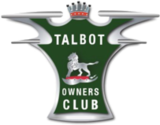Tour of Newby Foundry 18th Jan 2017
This was a very rare opportunity to experience something which will fascinate all members. The Newby Foundry is casting the new iron blocks for Talbot 105’s.
See the youtube video: Click Here
On 18th January, Newby Foundries Group kindly hosted a visit by the TOC. Richard Newby, Chairman and Talbot owner is working with Gareth Burnett of Pace Products to produce replacement iron engine blocks for Talbot 105s and we were able to see one being poured.
We were first given a fascinating presentation of what Newby Foundries Group does and how castings are made. The company started business in 1882 under Richard’s great grandfather, initially producing decorative items such as coffin furniture and toys, but transferred over to grenades during WW1. Between the wars it moved into electrical parts and turntables. Come WW2 Newby started manufacturing more complex precision engineering items, especially pump components.
Newby has always been an independent family-owned company and Richard took over the business in the 1960's, expanding by buying other foundries and later consolidating the group onto the present site. Weathering the 1990s recession, they began to specialise in hydraulic components and turbocharger parts for heavy diesels and trucks.
Now employing about 100 staff on the main Wednesbury, West Midlands site, Newby are specialists in the production of high quality shell and airset castings in various grades of iron, manufacture of carbon and stainless steel sand castings and investment castings in a range of materials. The company also has a division concentrating on prototype castings, either from CAD or existing parts, which is where the Talbot blocks come in.
The challenges of making this block had defeated other foundries that Gareth had approached, due to the complexity and astonishingly thin walls of the Talbot design, contributing, of course, to its compact size. By using CAD modelling for temperature and flow, Newby was able to re-create a 17-piece 1.5 ton mould and, by casting upside down, were able to achieve a good result. The final ‘trick’ was to calculate that the most effective method of getting the optimum temperature flow to all corners of the mould was by getting the metal to flow into the block in less than 20 seconds. This is achieved by pouring into a reservoir at the top of the mould and then pulling two plugs so that the molten metal flows quickly and evenly throughout the mould. Several of these blocks have now been produced and one powered John Ruston’s winning Alpine Trial car last year, proving its ability.
The company showcased an extraordinary mix of old and new technologies, from men shovelling reclaimed brake discs - part of the raw material input - to high-tech computers and robots. As Foundry Manager Steve explained, the raw materials are scrap metal and sand. The skill is getting the ‘recipe’ right between different metals for each application.
Not only did Newby Foundries provide us with a fascinating tour with several of the senior management on hand to answer our questions, but also a scrumptious buffet. Thank you to them all and especially to Richard Newby.
THE TALBOT OWNERS CLUB MAGAZINE
The Talbot Owners Club magazine is published bi-monthly and contains news, updates and informative articles. It is edited by club secretary David Roxburgh.
GO TO DOWNLOADS
TALBOT OWNERS CLUB MEMBERSHIP
The essence of the Club is to ensure that members meet and enjoy themselves; the Club is open and democratic, dialogie is encouraged. It is for people of all ages who like Talbot cars and want to enjoy the company of like-minded people and also to support current Talbot involvement in historic competition.
